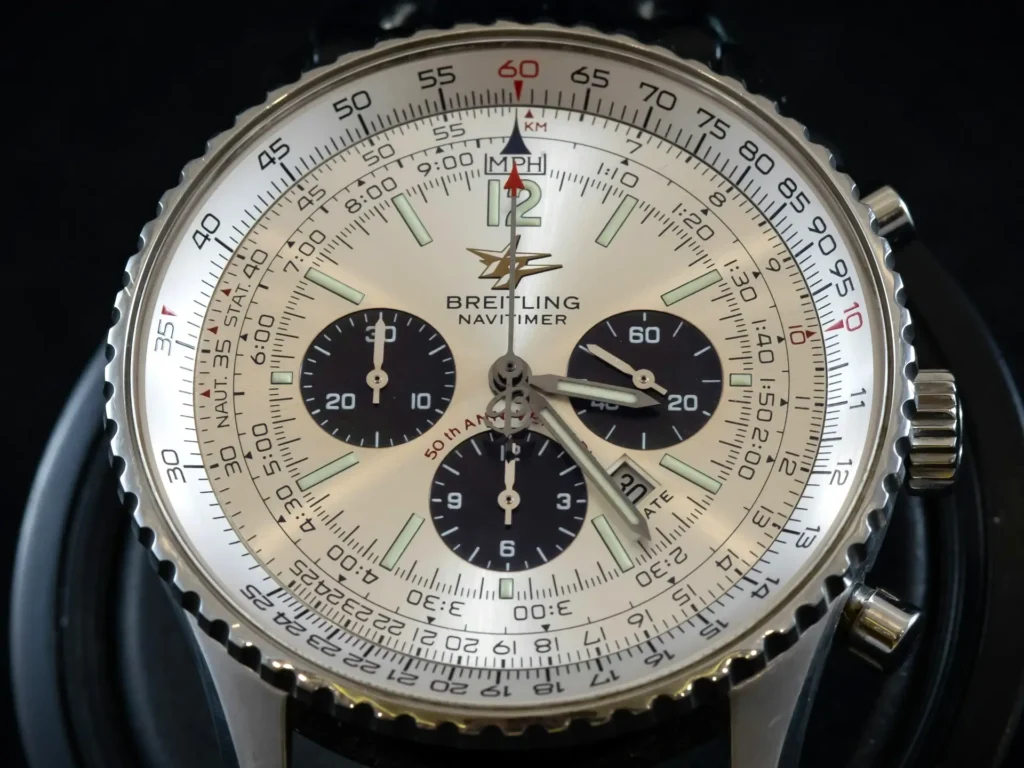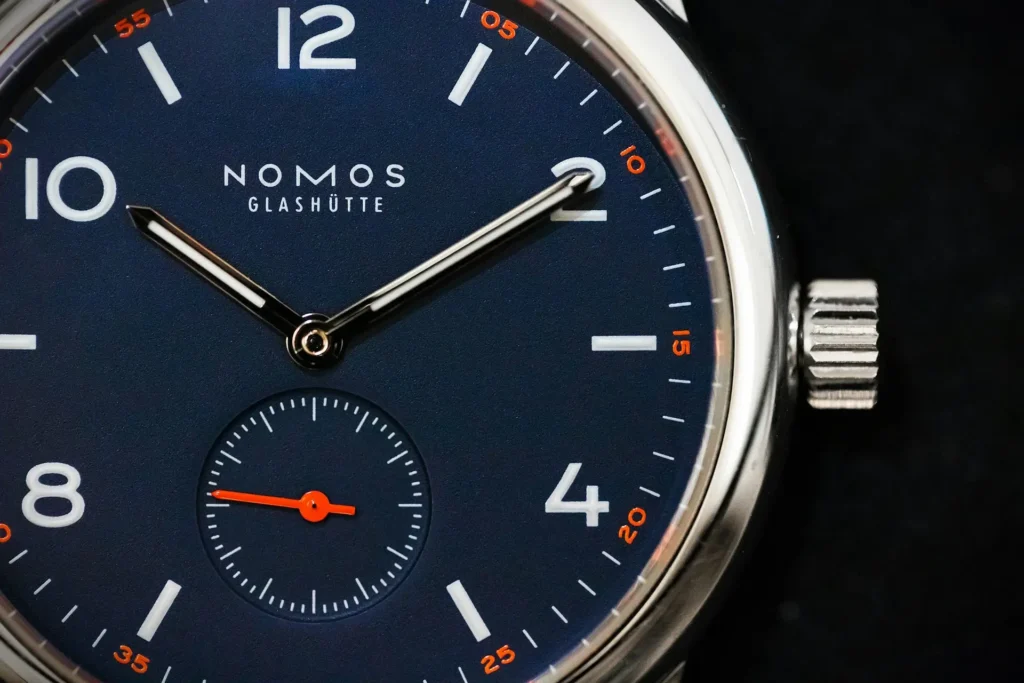Watch Sub-Dial Functions Explained: A Beginner-Friendly Guide
When you first glance at a watch with sub-dials, it might seem a little intimidating. What are those tiny circles within the watch face, and what do they do? Whether you’re new to watches or looking to expand your collection, understanding watches sub-dial functions can completely change how you appreciate these intricate timepieces.
In this guide, I’ll break down everything you need to know about sub-dials. By the end, you’ll not only understand their purpose but also know how to choose a watch with the features you actually need.
Contents
What Are Watch Sub-Dials?
Sub-dials are those smaller circles within your watch’s main dial. Think of them as mini-watches within your watch, each with its own special job. While they might look intimidating at first, they’re actually quite logical once you understand their purpose.
You’ll typically find these sub-dials arranged symmetrically on the watch face – usually at 3, 6, and 9 o’clock positions. Some watches have two sub-dials, others have three, and a few complex pieces even sport four.
Breaking Down Sub-Dial Functions
1. Chronograph: Your Built-in Stopwatch
The most common sub-dial function is the chronograph – basically, a fancy word for a stopwatch.

If your watch has three sub-dials, they’re likely chronograph counters:
- Hours counter (usually tracks up to 12 hours)
- Minutes counter (typically counts up to 30 minutes)
- Running seconds (shows the regular seconds, separate from the chronograph)
To use a chronograph effectively, first ensure it’s reset to zero. Press the top pusher to start timing, and again to stop. The bottom pusher resets everything to zero.
Recommendation: For a reliable chronograph watch? Check out the Citizen Garrison Chronograph watch. It offers excellent value for beginners. For something more premium, consider the Seiko Prospex Speedtimer Chronograph.
2. 24-Hour Time Sub-dial
The 24-hour sub-dial shows you the same time as your main hands but in 24-hour format. It’s particularly useful for:
- Checking if it’s AM or PM when setting the date
- Military/aviation time reference
- Understanding day/night cycles
To read it:
- The hand makes one complete rotation every 24 hours
- When the main time shows 2:00, the sub-dial will point to either:
- 14 (2 PM) or
- 2 (2 AM)
The 24-hour sub-dial will follow automatically since it’s synchronized with the main hands. This is different from GMT watches, which have an independently adjustable hand.
3. Calendar Sub-Dials
These sub-dials provide details like the day, date, and month.
- Day Sub-Dial: Displays the current day of the week.
- Date Sub-Dial: Tracks the calendar date.
- Month Sub-Dial: Useful for annual calendar or perpetual calendar watches.
Stylish Option: Check out the Citizen Eco-Drive Corso, which pairs a sleek design with functional calendar sub-dials.
4. Moonphase Sub-Dial
This sub-dial displays the current phase of the moon, an elegant feature for astronomy enthusiasts or anyone who appreciates the night sky.
- Tracks the 29.5-day lunar cycle.
- Adds a touch of sophistication and luxury to any timepiece.
Recommendation: The Orient Sun and Moon watch is a stunning option that blends moon phase functionality with classic style.
5. Power Reserve Indicator
This sub-dial is essential for mechanical watch lovers. It shows how much power remains in the watch before it needs to be wound again.
- Keeps you from accidentally letting your watch stop.
- Especially useful for daily wearers of mechanical timepieces.
Recommendation: The Orient Star 2nd Gen is known for its impressive power reserve and clean design.
6. Small Seconds Sub-Dial
This replaces the central seconds hand with a dedicated sub-dial, offering a vintage-inspired aesthetic.
- Often found on dress watches.
- Adds a minimalist and elegant touch.

Classic Choice: The Orient Classical RN-AP0003S is a timeless option for anyone looking for a dress watch with a small seconds sub-dial.
Making Sense of Sub-Dial Layouts
1. Two Sub-Dial Configuration
Usually found in more affordable chronographs, these typically show:
- 30-minute counter
- Running seconds
2. Three Sub-Dial Layout (Most Common)
The classic arrangement includes:
- 12-hour counter
- 30-minute counter
- Running seconds
3. Multi-Function Combinations
Some watches mix different functions. For example, you might see:
- Chronograph minutes
- 24-hour display
- Day of the week
Common Issues and Solutions
1. Sub-Dial Not Resetting to Zero
If your chronograph hand doesn’t return to 12 o’clock:
- Pull out the crown to position 2
- Press the pushers to align the hands
- Return the crown to the normal position
2. Stuck Calendar Display
Don’t adjust the date between 9 PM and 3 AM – this can damage the mechanism. If it’s stuck:
- Advance the main time past 6 AM
- Then adjust the date safely
FAQs
Q: Can I use chronograph pushers underwater?
A: No, unless specifically stated by the manufacturer. Water can enter through the pusher seals.
Q: Why does my chronograph second hand tick differently from the main second hand?
A: Chronograph seconds often tick at 1/5 or 1/8 second intervals, while the main seconds hand typically moves once per second.
Q: How accurate are moon phase displays?
A: High-quality moon phase displays need adjustment only once every 122 years, while basic ones might need correction every 2-3 years.
Final Thoughts
Sub-dials transform a simple timepiece into a sophisticated instrument. Whether you’re timing your morning run with a chronograph or tracking a different time zone with GMT, these functions add genuine utility to your watch.
Remember, the best sub-dial configuration is the one that matches your needs. Don’t be swayed by complexity alone – choose functions you’ll actually use.